ISPO TEXTRENDS 2024
General Information.
Textile Trends for Fall/Winter 2026/27

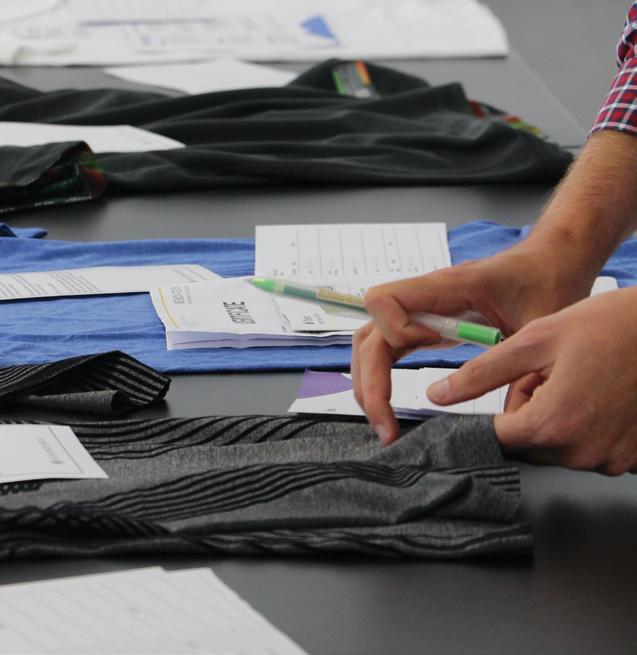

General Information.
Textile Trends for Fall/Winter 2026/27



For designers and product managers, the search for new and innovative suppliers of performance textiles, components and apparel seems to be just as time consuming and elaborate as the proverbial search for the needle in a haystack. Simplifying this task, reducing the expenditure of time and yet improving the results – this is the aim of the presentation platform dedicated to sourcing in the textile value chain.
In its structure and concept, ISPO Textrends is very similar to award contests. The participants apply with their most innovative products, which are reviewed by two international juries of experts. The best entries are chosen and will benefit from extensive sales and promotional services.
Dates for the ISPO Textrends Fall/Winter 2026/27 contest: July 1 st , 2024 Start of application phase September. 30, 2024 Final application deadline October, 2024 Jury meeting December, 3-5 2024 Outdoor by ISPO
We continuously update the information on our website. If you have questions, please get in touch via stephanie.ledru@lol-marketing.com
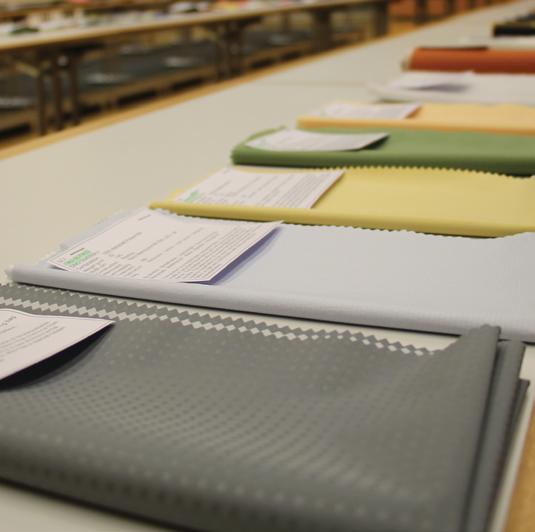
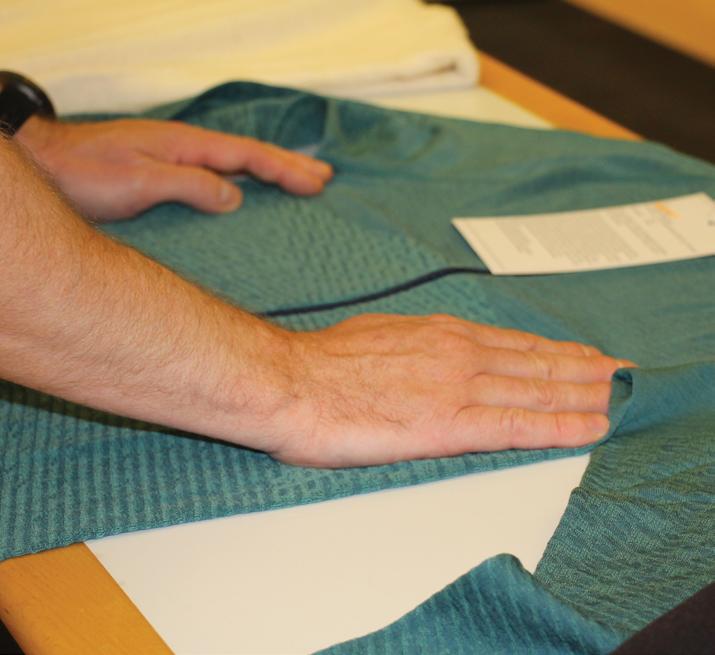
3. All relevant background information as certificates, laboratory tests etc. The main facts at a glance. Apply now: ispotextrends.awardsplatform.com
Products can be entered for the product segments textiles, components and ready-made-garments. Please see pages 5 & 8 for more details
An international jury will select the Best Product, the Top Ten and Selection products in each category.
All awarded products receive an outstanding ISPO Textrends benefit package.
If your products are selected by the jury, the respective companies will receive the benefit package for a promotion fee.
What does the jury need to evaluate your product?
1. Completed online application
2. For each application, two product samples must be submitted: two samples 50 x 50 cm for fabrics and two pieces of each garment, accessory or trim.
Please send those samples before the final deadline to :
Lol Marketing
Stéphanie Ledru
6, rue du Chêne 72650 La Milesse France
Mobile: +33 6 28 70 87 11 stephanie.ledru@lol-marketing.com
Innovative fabrics, fibers, trims, and accessories can be entered in the following 10 categories. At the jury meeting 2 categories will be added: Accelerated Eco and Performing Finishes.


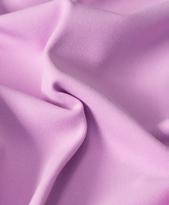
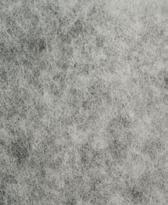
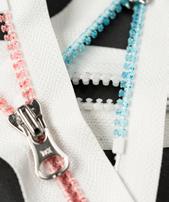
Next-to-skin fabrics with preshaping, support, thermal or moisture management performance. Softness, comfort, anti-bacterial or eco-friendly properties are added values.
Lightweight but ultra-resistant woven shell fabrics, with surface performance. Stretch, waterproof, windproof, breathable feature for ultimate protection against the elements. High tenacity micro light rip stops work alongside matte and bright woven fabrics.
Fabrics range from ubiquitous denim with new performance levels to lighter functional fabrics and finishes with a fashionable edge that meets the demand of today’s urban offering for second and outer layers.


Fleece fabrics, lightweight protective fabrics and performance linings, stretch or non-stretch. Advanced thermal management. Natural fibers from wool and cotton sustainable fibers, including cellulosic, work alongside next generation synthetics, both virgin and recycled.
Technical membranes, stretch, waterproof, windproof with two or three layers. Reflective and UV-resistant are added values. Teaming function with fashion as colored and printed graphics combine.

Traditional feather down, hollow and cross-section man-made or natural fibers with enhanced benefits for activewear. Biomimicry features through virgin and recycled synthetic fiber delivery, with thermal regulating finishes offering added warmth.
Essential ingredients ranging from zippers to buttons and snappers in a wide range of materials. Innovation features in lightweight, durable and waterproof functionality, strong performance essential to the physical activity and the life of a product.
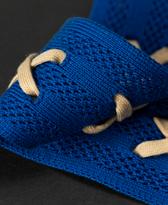
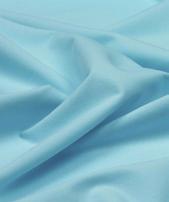
Performance products for tents, backpacks, sleeping bags, shoes, etc. Lightweight, durable, abrasionresistant, UV-protecting, waterproof, etc. are required
Films and tapes for protective sealings and welded applications feature. Technicity combines with creativity, as technical ribbons, cords, embossing and transfers offer the opportunity to create a customized signature style.
From scuba to swimwear, functional fabrics are key to the increase in water sports. Quick dry, UV+, salt, sand and sun lotion resistant allow a higher level of flexibility and durability. Recycled synthetics, especially from the ocean appeal with beach-to-street apparel adapting to different occasions and adding to the eco aspect of less is more.
Across some categories (Base Layer, Second Layer, Outer Layer, Street Sports, Membranes & Coating and Soft Equipment) we will honor products with outstanding achievements in terms of sustainability and products that stand out for their finishes.
During the application process, participants can choose whether they want to be part of one of these special evaluations. At the jury meeting, the jury will decide which products qualify for Accelerated Eco or Performing Finishes and move these products to the respective category. Products that do not qualify for the Cross Categories will be evaluated within the basic category they have originally been entered for.
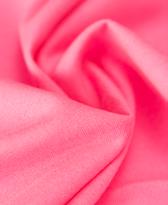
Products setting a new standard in terms of sustainability: innovative performance yarns that require reduced heat for settability, heightened efficiency in terms of water and energy savings, a reduction of waste and reduced or optimized processes throughout the textile chain. E.g. recycled or biodegradable yarns, yarns for long-lasting products, dope-dyed yarns for water and energy saving, natural dyes, etc.
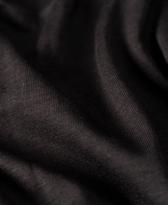
Outstanding innovations in terms of finishes: products that are using anti-odor, anti-bacterial or protective finishes for well-being and personal protection. E.g. far infra-red, chromatic change coating, reflective finishes, smart finishes etc.
Each entered fabric & component will be evaluated according to the following five criteria:
CRITERIA DEFINITION
Performance
Evaluate the primary performance of the product in improving the wearer’s activity level; enhanced performance like moisture management; energizing properties; FIR fabrics; compression
Best Hand Touch and feel (may also apply to a multi-functional fabric that is incredibly soft and lightweight)
Creativity
Applies to a trim or print technique with a strong fashion aspect, especially regarding importance of brand names on garments
Innovation Genuinely new development or process (use of brand new fibers, innovative combination, special fibers, etc.)
Best MultiFunction Evaluation of the product’s number of powerful performance characteristics (laminated or bonded fabrics)
Rated 0 – 4: according to international textile standards
Rated 0 – 4: sensory test lightweight can be defined for each category separately
Rated 0 – 4: sensory test, based on the jury’s experience; judging based on congruence with ISPO textile trends, plus the use of new technology e.g. printing etc.
Rated 0 – 4: the newer the innovation, the more points will be given
Rated 0 – 4: according to international textile standards
In addition to the five basic criteria, products in the category Accelerated Eco will be evaluated according to their achievements in terms of “Eco/Sustainability”. This criteria is double weighted in relation to all other criteria.
Eco/ Sustainability
Applies to waste reduction, low energy and water use in production & recycling criteria – depends widely on accepted certificates
Rated 0 – 4: total reduction in comparison to the prior year and total consumption per unit
In addition to the five basic criteria, products in the category Performing Finishes will be evaluated based on their finishes. This criteria is double weighted in relation to all other criteria.
Performing Finishes Products that are using anti-odor, anti-bacterial or protective finishes for well-being and personal protection – Far Infra-red – chromatic change coating – reflective finishes – smart finishes etc.
Rated 0 – 4: use of any performing finishes for adding performance value to the product
Innovative garments and accessories can be entered in the following 8 categories. At the jury meeting 2 categories will be added: Accelerated Eco and Smart Technologies.
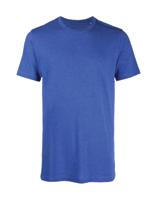
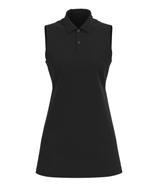
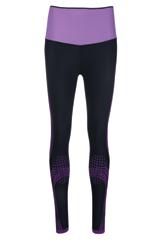
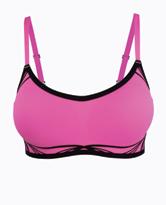
Next-to-skin garments and base layers, short or long sleeve, that score with breathability, moisture control, and quick drying properties. Dynamic design allowing freedom of movement and optimal support for best performance.
Athletic dresses & skirts that offer freedom of movement and optimal support throughout physical activities. Sophisticated designs and cuts make the garment interesting.
Bottoms from base layers to outer layers, trousers, tights, leggings and shorts. High comfort and optimal functionality for the respective, designated sports and outdoor activity.
Undergarments that best support any physical activity and swimwear for water sports. Anti-odor, quick dry, breathability, and maximal comfort are adding value as well as UV+, salt, sand, and sun lotion resistance.
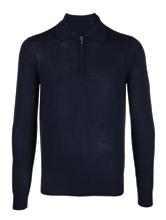
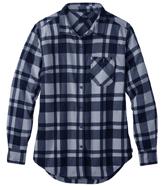
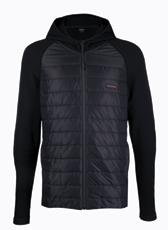
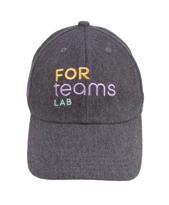
Second and mid layers for optimal insulation and flexibility during any sports and outdoor activities. Lightweight, breathable, quick dry and temperature regulation are added values.
Woven shirts and blouses with bi-elastic fit and high degrees of comfort for all kinds of athleisure activities. Breathability, freshness, UV-protection and antibacterial properties are added values.
Jackets and vests as mid and outer layers. Softshell and fleece jackets, padded, insulated and down jackets, and coated weather jackets that provide high resistance to the elements. Additional properties can be 3-in-1 functions, waterproof, windproof, thermo regulation or features adding functionality for a specific activity
Textile accessories that are essential for sports and outdoor activities such as socks, headwear, gloves, scarves, etc. with a functional element. Also shoes and equipment such as backpacks and bags.
We will honour products with outstanding achievements in sustainability and smart technologies in 2 separate cross categories: Accelerated Eco and Smart Technologies.
During the application process, participants can choose whether they want to be part of one of these special evaluations. At the jury meeting, the jury will decide which products qualify for Accelerated Eco or Smart Technologies and move these products to the respective category. Products that do not qualify for the Cross Categories will be evaluated within the basic category they have originally been entered for.

Holistic and well considered product concept with sustainable aspects in every part of its whole lifecycle: from design and development, over production and processing, to usability, durability and finally to its end-of-life and recycling.

Products with smart and creative features, that make the lives of consumer easier: e.g. multi-functionality, compatibility with wearables etc. Smart technologies can also refer to innovative production processes, that make the lives of producers easier.
Each garment will be evaluated according to the following four criteria:
CRITERIA DEFINITION
Design Evaluate the overall look of the product: cut, workmanship, seams, material choice (fabric, trims). Additional focus on creativity and innovative character.
Quality & Performance Performance of the product, submitted test results such as seam strength, dimensional stability, color fastness, abrasion resistance etc.
Sustainability
Evaluation of raw material choice, durability, generated waste, water and energy consumption, dyeing process and additional social responsibilities undertaken.
Value Added value for the end consumer. Functionality, practicability, and comfort.
Rated 0 – 4: sensory test, based on the jury’s expertise.
Rated 0 – 4: according to submitted test results and reports, based on international textile standards.
Rated 0 – 4: depending on submitted certificates and the jury’s expertise.
Rated 0 – 4: the higher the added value, the more points are given.
In addition to the five basic criteria, products in the category Accelerated Eco will be evaluated according to their achievements in terms of holistic sustainability. This criteria is double weighted in relation to all other criteria.
Holistic sustainability Integration of sustainable practices throughout the full lifecycle or the garment/accessory: from design to end-of-life and recycling. Considered are socio-ecological impacts such as the production’s impact (both environmental and social), the raw-material selection and the social responsibilities undertaken.
Rated 0 – 4: the newer the innovation is, the more points are given.
In addition to the five basic criteria, products in the category Smart Technologies will be evaluated according to their achievements in terms of smart features. This criteria is double weighted in relation to all other criteria.
Smart features Products that improve the garment’s performance and usefulness for the end consumer with the integration of new functionalities. Applies for electric, electrochemical, optical sensors, and more.
Rated 0 – 4: the newer the innovation is, the more points are given.
Each awarded product receives the following benefit package:
Increased Publicity & Visibility
Product showcase at Outdoor by ISPO and ISPO Shanghai
Winner Ceremony
ISPO PR and Communication
ISPO.com feature
Review and report about event activity (Textrends Hub at Outdoor by ISPO)
Professional Product Representation
Professional photoshooting of your product
Feature in the ISPO Trendbookdouble page
Feature in the ISPO Trendbooksingle page
Best Product label
Top Ten/Top Five label
Selection label
Winner manual (the How-to guide for labels)
Textrends Trophy
Textrends Certificate
Be a sponsor and apply with your partners. If you are a textile and components manufacturer and want to do a marketing cooperation with your ready-made garments customers, apply with them, send us your product and theirs and receive a 500€ discount on each product selected.
Ready-made garments manufacturers can also cooperate with their textile customers and benefit from the same discount of 500€. Please send us your product and theirs.
During the application, just fill up your partners details on the "Contact details for buyers" tab. Cost for Sponsors: Take the same table and decrease the price by 500 €.

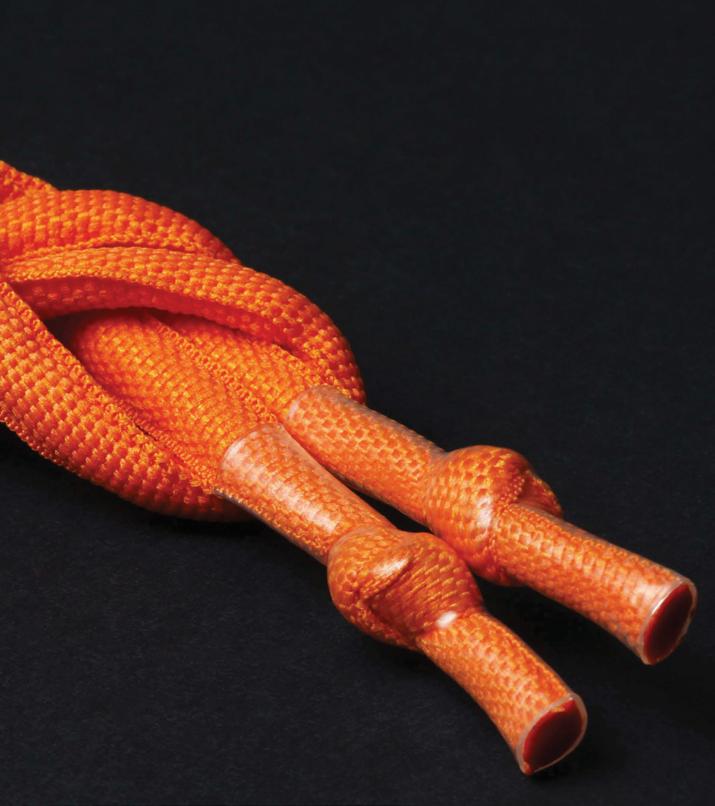
Louisa Smith is an international textile trend consultant working with companies as early as three years in advance in all sectors of the textile chain, from fiber through to final garment. Louisa’s vision and research, monitoring textile developments through to global affairs has a bearing on delivering the right on-trend directions that connect the industry at all levels.
With over 25 years of international experience in the fashion and textile industry, Louisa works with a range of companies in delivering on-trend information and market intelligence at all stages. Graduating in Fashion and Textile design at Manchester Metropolitan University, her career commenced in the fashion manufacturing and textile hub of Hong Kong, developing connections with China, the USA and Europe.
An avid traveller, Louisa continues to monitor consumer habits, social aspects and retail developments throughout the world, incorporating what she sees and visualizes during her travels into her trend work.
A regular on the international textile trade show circuit, her market and textile research and product development articles combined with published trends are featured internationally in a variety of trade publications.

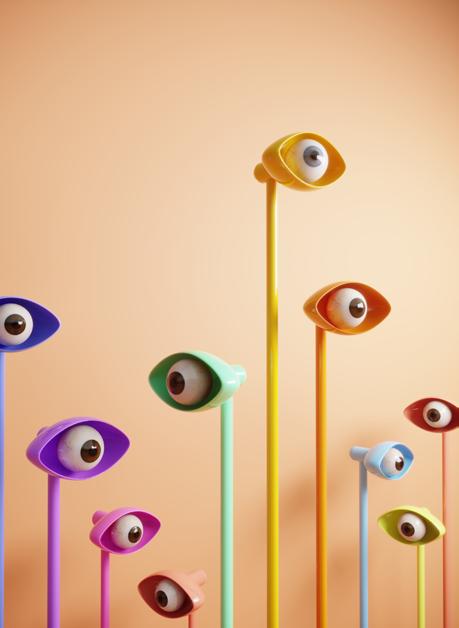
Visions for the Textile Industry
ISPO is your gateway for future trends. In cooperation with trend expert Louisa Smith ISPO has studied various global trends with influence on the textile industry and its products. In combination with the defined trend colors and five more detailed textile trends, these megatrends provide a good vision where the future of textiles will take us.
ISPO is very pleased to have the opportunity to share these visions for Spring/Summer 2026 with the textile industry and to use these trends as a basic guideline for ISPO Textrends Award Summer 2024.
The megatrends show visions that are not specific to one particular area, but will influence the entire textile chain right down to the consumer. The color cards and the textile trends result from a range of influences, from consumer behavior to the global economy. Film, music, social media, art and many other activities are reflected in these trends.
They form a basic guideline how new developments and innovations of ingredient products will be shown, presented and highlighted at ISPO Textrends Award Summer 2024.

Let’s get ready to rumble…

The global rallying cry for continued innovation is the underlying mood for Fall/Winter 2026/27, and it is to the entire textile chain, not just the textile manufacturers. This season’s motto, ‘Let’s get ready to rumble,’ hints at our fight for the future.
We have the technology, innovation, and ingredients to scale up to commercial level with many new innovative processes in the textile chain, but the lack of support from the entire industry hampers developments.
For this season, everyone has to be on board, shouting for change, from fiber to the final consumer. However, to all involved, these new developments do come at a cost that has to be passed through the chain to support the growth. Brands have to become braver in introducing innovation to consumers, with less emphasis on margins. The consumers need to know what is available, and instead of being crammed in a competitive market, why not leap in a new direction?
The textile industry is one of the oldest industries. To some, it is compared to a dinosaur, but for those involved, we have shifted steadily toward sustainability and will continue to do so. Now isn’t the time to sit back and clap ourselves on the back. We must continue this surge forward in creating a new level of textiles, apparel, and equipment for a new generation of consumers who expect so much more.
In comparison to the fashion sector, the performance fabrics have an advantage. We are cleaner in chemicals, pushing eco boundaries and maintaining the functionality the consumer requires for a wide range of activities.
The 2030 Paris Agreement is still referenced in reducing emissions and the use of natural resources, reducing waste, and ensuring the temperature doesn’t rise further, with the end goal of net zero. We are looking towards product longevity, how they have more value for a longer amount of time before they are returned to the circular economy.
With this season also comes the effect of the new EU legislation 2027. Comply or die when it comes to selling into Europe, but once again, the performance fabrics sector is well positioned to deal with the abundance of data required by this new legislation for Digital Product Passports (DPP). Transparency and traceability run through the performance textile industry’s DNA, and as long as we continue on our clear path to improvement - there shouldn’t be problems. But now is the time to get ship shape with information about your sourcing and product IDs.
Keeping all the criteria in check, including innovation, R&D, sustainability, compliance, creativity, performance, quality, durability, and so much more, is a bit like spinning plates. You keep the motion at all times unless a plate smashes to the floor. But we, as an industry, can do this as long as we are all on board and fighting the good fight for the future.
Happy sourcing for Fall/Winter 2026/27.

Business is becoming a data-driven labyrinth. If you don't keep up with the information, especially with the EU directive of Ecodesign coming into effect, covering sourcing, recycling, and end-of-life, you could be in trouble. But fear not. Whilst we may feel like we could be drowning in data, we should already be well placed in transparency and traceability as a collective. If you aren't already doing this and showing your true colors, you won't be in business for much longer.
Transparency has been a critical proponent for the sports and outdoor sectors, and we are far better placed than other textile sectors. However, it still irks some, and certification throughout the supply chain makes it more accessible. Brands also need to connect on the care of products to lengthen their life, offering re-use platforms and repair services that are widely available. It is time for producers to take responsibility for their products along the value chain, including at the end of life and how they will be disposed of.

Declared initially as a disruptor, digitalization is now an indisputable necessity in modern-day living and business. The agility and efficiency of digitally transformed equipment can benefit the industry in a wide range, from micro precision markers for cutting and reducing waste on the cutting room floor to AI-driven sewing machines. At an industry level, cloud chain technology can reduce overproduction and excessive inventory stored in acres of warehouses. We must unlock the potential that augmentation, AI, and digitalization can offer. And surprising enough, it isn’t as complicated as it sounds.
AI in circularity is essential in the mechanical stripping of garments. It can distinguish from one fiber to the other with ultimate precision. 3D-generated samples make the supply chain accessible throughout the different stages, and it can be controlled and manipulated by human input, creating a more efficient outcome.
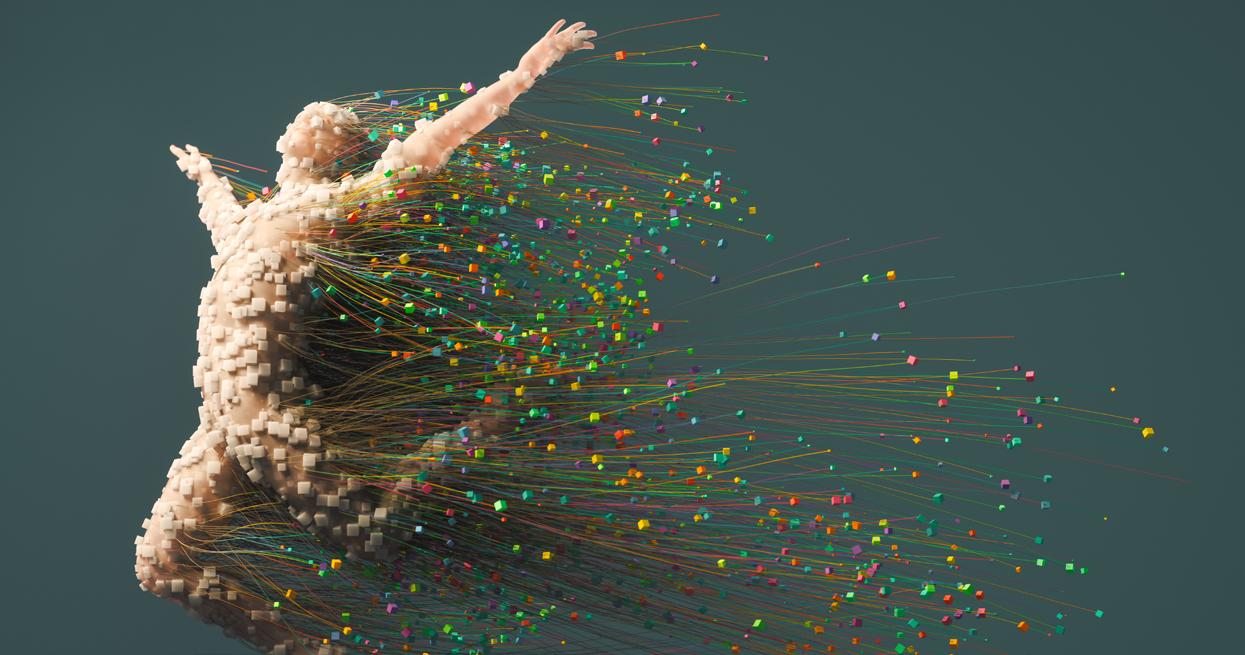
Moving on to humanization, remember the primal needs we mere mortals require. The first is protection, which is perfect for the sports and outdoors industry, as this is what we do best: creating the best products that will perform and function no matter what the environment. But this still has to be done by human hands, the final stages, the wear trials, and the physical fit and feel.
This can not be mimicked by any data-driven force, nor can the peace of mind or the feeling of exhilaration achieved from sports and outdoors participation. The same for creativity, consumers want different, you only have to travel through social media to see the self-expression through art, music and dance. The same can be said for retail as the ‘phygital’ experience - physical bricks and mortar versus clicks, as IRL experiences and environments backed up by IRT digital support and connection, encourage motivation.


COLOR COLLAB
The impact of color must not be ignored. Its importance is pivotal from reassurance to emotional, enriching, safeguarding, protective, and plain old uplifting mood. But as we move towards a new chapter of the textile industry, we must become more vigilant about how we work with color, adapting new ideas, conserving water, digital printing, and dope dyeing again—there are so many options. So why do we have to be more innovative with our colors? We could cross previous deadstock from past collections and incorporate it into another, saving waste and off-cuts. This doesn’t mean we need to be dull; on the contrary, self-restriction could make us more innovative and creative. Let’s wait and see. At ISPO Textrends, we share our color directions based on the moods we are picking up globally. We aren’t here to enforce any one color and berate a brand if it breaks rank. Our aim is to share and collaborate on a collective scale, which is why we always lead with a CORE palette plus four satellites for interplay. Whether it is a seasonal colorway or a tone for tipping, color will always be important, but it must also come from the brand's creative
soul. This season’s palettes take on carousel -inspired circularity - pick and mix or play it safe. The choice is yours.
Core
This season, the CORE inspiration pulls from a stoic direction. Strength but also clarity feature as we run with our traditional black, white, and grays, with the traditional primary tones taking on a more refined hue. There is an intensity to this season’s CORE—bold, strong, and clear—an ambitious oxymoron for the base rock as hues appear differently depending on the fabric content and finish.
The prismatic color of a glass lens inspires this palette, as dark tones contrast with the flicker of lightenhancing rays of orange and pink. This color offers iridescence, which it could achieve in lacquered looks, from foil prints to lustrous coatings, and holds appeal.
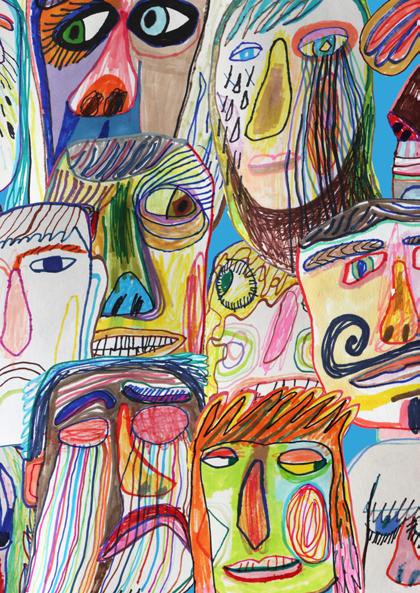

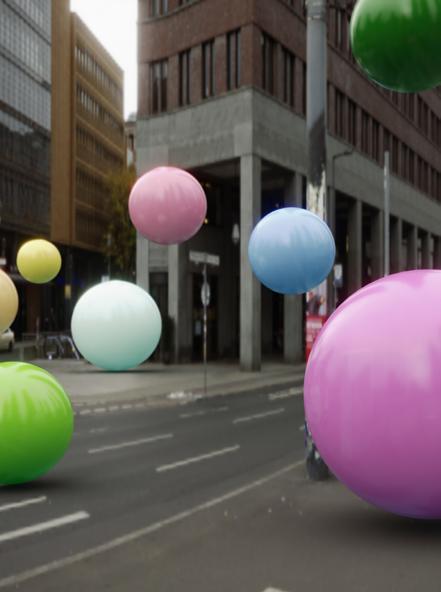
A sensational range of accents that highlight the brights with the neutrals, as a new energy emerges, a creative overthrow as Human-to-human collectiveness comes through with a clashing crash of tones. Anything goes; there are no new rules!
Modern mythology embraces AI and the metaverse, and the wonders that nature expels in colors. This is digital nature at its finest. It will go deep and mysterious in matte substrates and electric the palette when it comes to iridescence finishes.
A sustainable approach to brand developments, as connected with tones from this season’s COREspecifically the white - bright and brash to uplift and outshine the dominance of deep earthy and urban tones. Diversification as urban outdoors continues. This is about transcending boundaries and pushing inclusivity and diversity, leading to greater consumer efficiency.
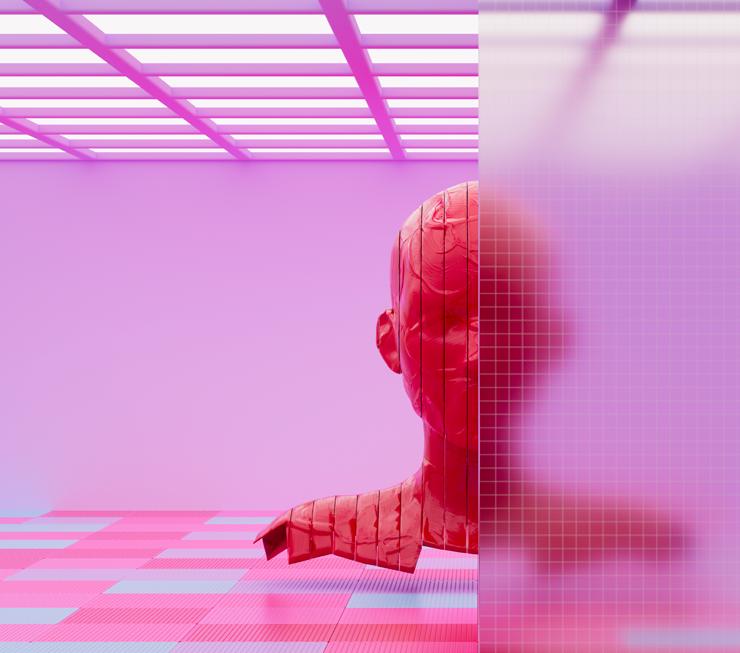
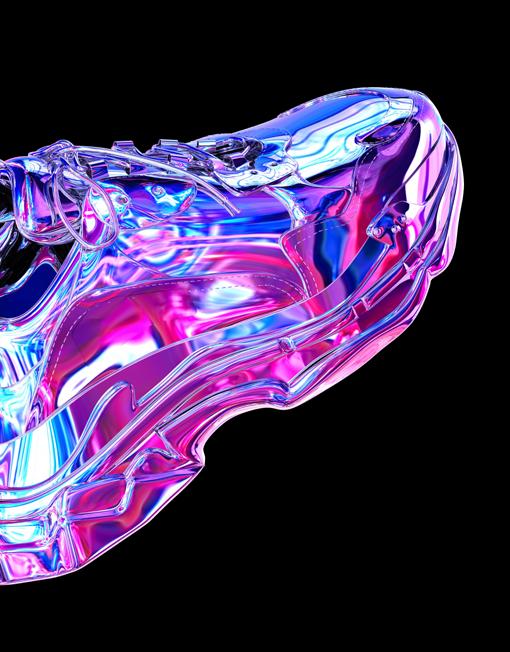
The Mood Making the impossible possible is the mood as ENIGMA dives into pushing beyond traditional boundaries. The focus is on creating lighter products that still maintain strength and robustness, not just for apparel but also for equipment. By lightening the load, performance can be enhanced, yet at the same time, deliver thermal regulation and outdoor protection.
Warp and circular knits feature here, working with performance nylon and polyester synthetics. Bio and recycled fibers also feature, but this trend isn’t adverse to using virgin synthetics due to the tenacity they can deliver and the extended life of a product. Natural fibers also feature, with wool being a mainstay in hybrid techno blends.
The end goal for traditional woven fabrics is attaining the required opacity and protection, and it is achievable. The objective here is to contribute to circularity as we look for fabrics that will last a longer life, can be returned to the circular economy at the end of life, and have been designed responsibly.
A new direction gaining ground is the evolution of nonwoven composites, not just in foam-based and molded trims and footwear but through textiles. Once very rigid, the new generation is achieving a much more malleable hand feel, and the nonwoven process adds to a new efficiency in terms of waste and energy saving. Smart designing and sourcing not only deliver responsible products but also apply the high level of performance the consumer requires.


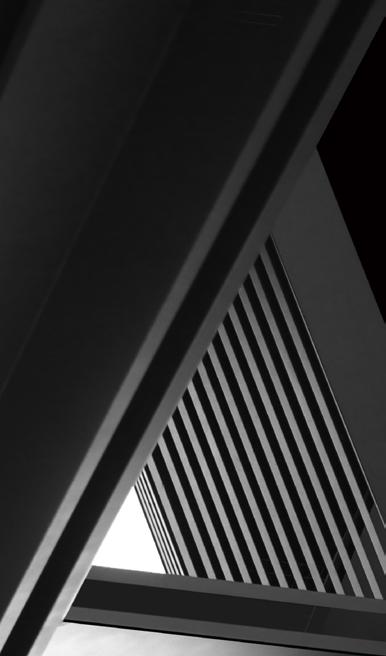
Ingredients
Polypropylene - virgin and bio-based - the lightest yarn known, hydrophobic performance, anti-static and new dye techniques
Bio-based propylene - sugar cane
Water-based Polyethylene Terephthalate PET in nanostructures
Glossy color refraction from membranes
Functional laminates
Printed membrane technology - anamorphic
Nylon 6.6. for sensual touch and longevity
High-tenacity aramid fibers
Graphene yarns and finishes
Dope dyed synthetics and spandex- water reduction and waste reduction
Ultralight high-performance insulation - recycled or bio-based synthetics
Microencapsulated performance - moisture management, FIR, cool touch
Topical performance finishes
Big data trims - printed QR codes and tracers
Trims - lightweight - 3D printed
Materials
Non-woven composites with a malleable touchless rigid and energy-efficient
High-performance protective foam
Ethylene-vinyl acetate (EVA) resins and bio-based EVA
PFC-free membrane technology - two-way
protection
Protective shell-like membranes - some rigidity
Lenticular tones - prints and membranes that shape-shift colors
High-power compression base layers
Body-mapped warp knits
Seamless manufacturing for apparel and equipment
Ultra lightweight fabrics for packable performance gear
Phase change materials (PCM) absorb and release heat in large quantities for the perfect personal ambient temperature
Superfine gauge knits with thermoregulating and heating technology 0 FIR
Transparent membranes that refract the surface of the fabric
3L and 2.5L for outdoors/urban crossover - micro lightweight
Semi-matte touch plain weaves and ripstop
Trims - recycled plastic -reflective, LED
3D Digital printed trims
Molded trims
Magnetic trims
Target Markets
Long-distance running and events
High-endurance sports that require rapid response to the wearer
Base through to outer layer for next-gen skiwear
Adaptive winter base layers
Road cycling
Soft equipment - backpacks and sleeping bags
Sports shoes and cycling helmets
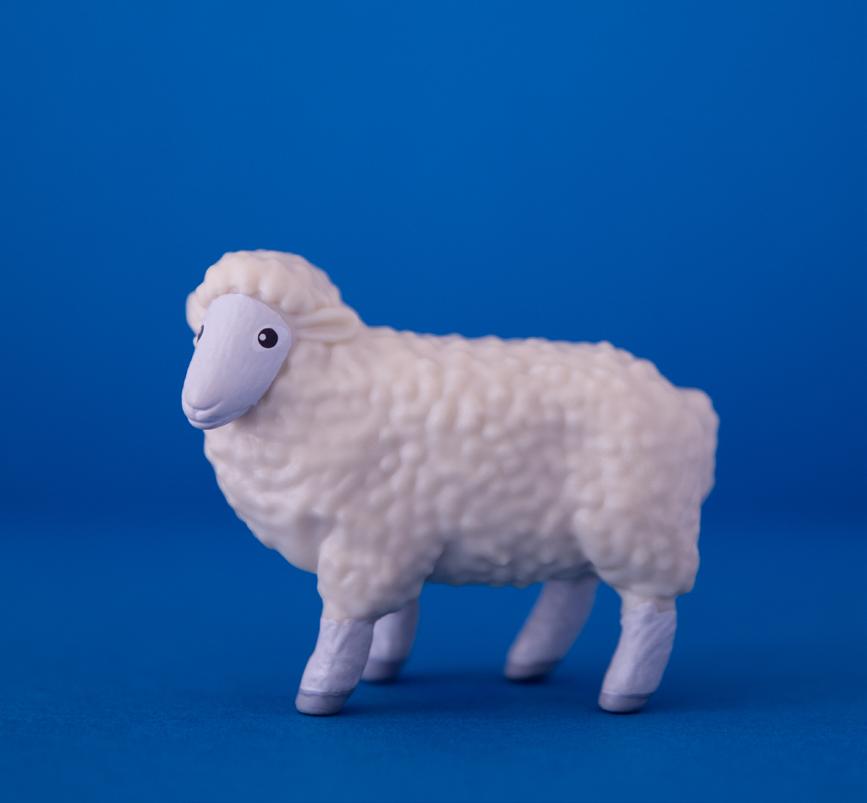
The Mood

This trend takes pride in highlighting the importance of natural fibers and materials. It isn’t about who is best in the green game: nature vs. synthetics; instead, it is about promoting natural ingredients and the benefits they bring to the sports and outdoor sectors.
The focus starts on fibers and fabrics that have been around for multi-millenial: wool, cotton, silk, hemp, leather, and fur. When it comes to feather down and leather are by-products of the food industry. They have to be sourced from fully traceable and certified supply streams, but from an ecological point of view, they shouldn’t be dismissed, as then they become waste. Why are we wasting valuable resources? Why do we waste materials that have stood the test of time? Down has a much smaller impact on the environment that alternative insulation, and isn’t just biodegradable and recyclable, at the end of the life cycle it is also compostable.
As we look to renewable agriculture, responsible farming, and renewable energy, cotton, linen, and hemp are bringing their own attributes to the performance level, from natural touch to moisture management and lightweight forms. New spinning technology is taking these fibers to a new functionality, following in Merino wool's footsteps, marrying tradition with technology.
Blends feature, and for a techno approach and enhanced longevity, we should look to synthetics to enhance the inherent benefits. Bio-based synthetics and recycled synthetics bring added support to natural fibers that still have a lot to give to the sports and outdoors industry.
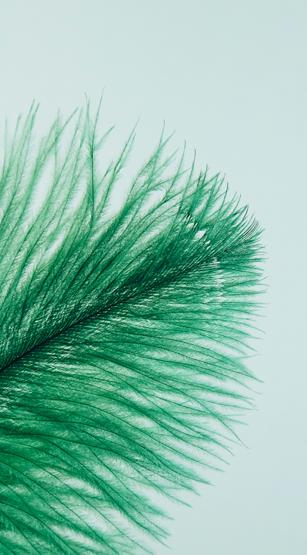

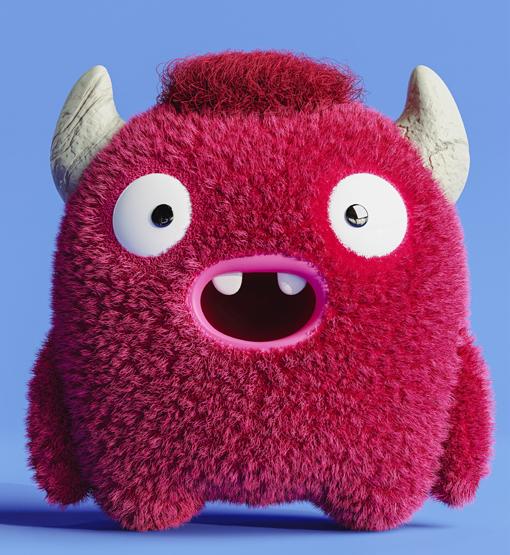
Ingredients
Wool, merino wool, recycled wool
Cotton, conventional and organic, with full traceability
Lyocell as a blending partner to wool and cottonresponsible deforestation
Leather - by-product of the food industrycertified animal welfare
Metal-free leather dyes and green chemicals for finishing
Traceable down - by-product of the food industry and compostable
Recycled down - hybrid down and recycled polyester insulation
Textile-to-textile recycled natural yarns
Natural insulation - camel, wool in pure or blends
Reduced microfiber pollution - check your chemicals in the dyeing and finishing process for biodegradable natural fibers
Silver ions for anti-odor in topical finishes or microencapsulated polyester
Recycled metal for trims
Water-saving solution dyes
Responsible chemistry
PFC-free and PFA-free finishes
Bio-based PFC-free
Solution dyed - dope dyed
Low-temperature dyeing processes
Water-less printing
Digital printing
Recycled and bio-base spandex/elastane
Bio-based and biodegradable synthetics for blends
Ocean near & far recycled synthetics
Leather Hemp
Materials
High tenacity wovens - plain weaves
Mono wovens with mechanical stretch
Knit and woven fabrics are constructed to reduce microfilament shedding
Micro lightweight packable performance outer shells
Matte touch rip stops
Milky touch lamination
Packable 2L outershells
Ripstop structures using natural fibers
Contrasting double-sided fabrics - leads to versatile designs with reversible details
2.5L and 3L high-performance protection in outer shells - not just for the great outdoors but quickly flipped over to the regularity of urban deluge
Performance denim
Classic denim for its biodegradability, but watch dyestuffs and finishing that could interfere with the speed of degradation
Natural/synthetic blends from recycled or bio sources in blends
Single and double knit wool and merino wool, using recycled synthetics or lyocell as a blending partner for enhanced durability
Yarn-dyed shirting - brushed surfaces
Wool blends - base layers - blend with bio synthetics for durability
Target Markets
Brilliant base layers for winter sports
Urban and active living - enhanced versatility
Hiking and camping
Classic outdoors for all of the family
Travel-wear - performance for all occasions
Urban exploration and sports
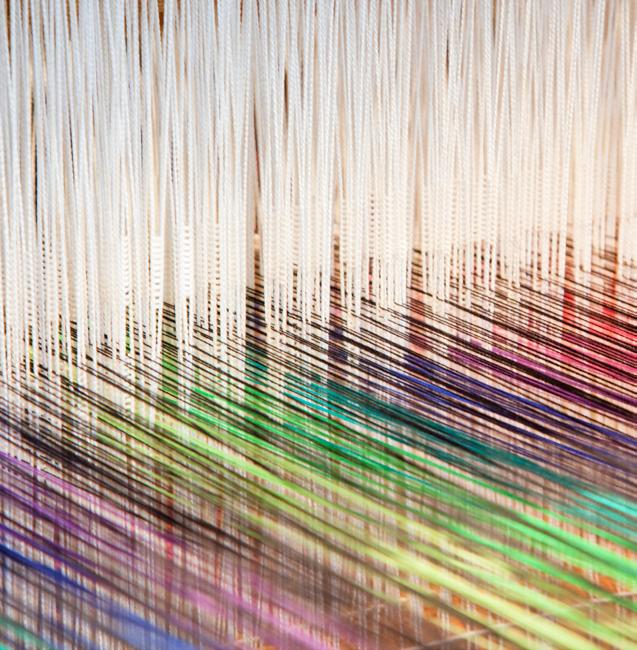

The Mood
The continued investment and innovation in transforming the textile industry from a linear model to a circular one has accelerated in recent years. The way we, as an industry source and design responsibly, designing products that can be easily dismantled and returned to the industry is a change. Before you even start, the mindset focuses on how you will return the product to the circular economy.
This new process inspires a host of new functional fabrics and material ingredients that can be returned more easily into the supply chain than before as mono fabrics gain momentum. The developments feature both natural and synthetic features, with spinning and fabric construction being key to creating a pure mono fabric that will perform well. Mechanical stretch, achieved through either of the latter, makes reaching a comfortable stretch level possible.
From the fiber blends feature gene, you can mix different cellulosic with partnering cellulosic (natural or man-made), and synthetics can be blended with the appropriate partner fibers (recycled, bio-based, virgin). You just can’t cross-fiber blend, as you will then lose the mono aspect.
This direction is based on the ease of dismantling at the end of life. We have to create products that will last but can also be returned and reused. This is all about responsibility, and there is definitely a place in the market for mono fabrics that deliver the functionality required for the sector.
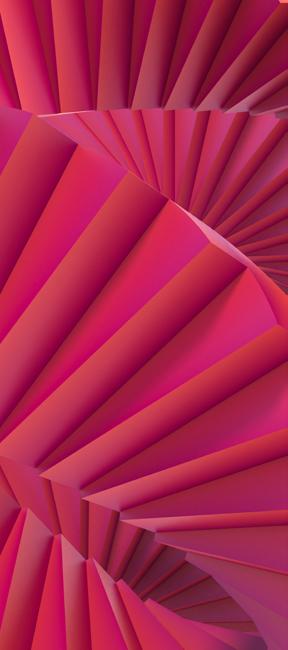
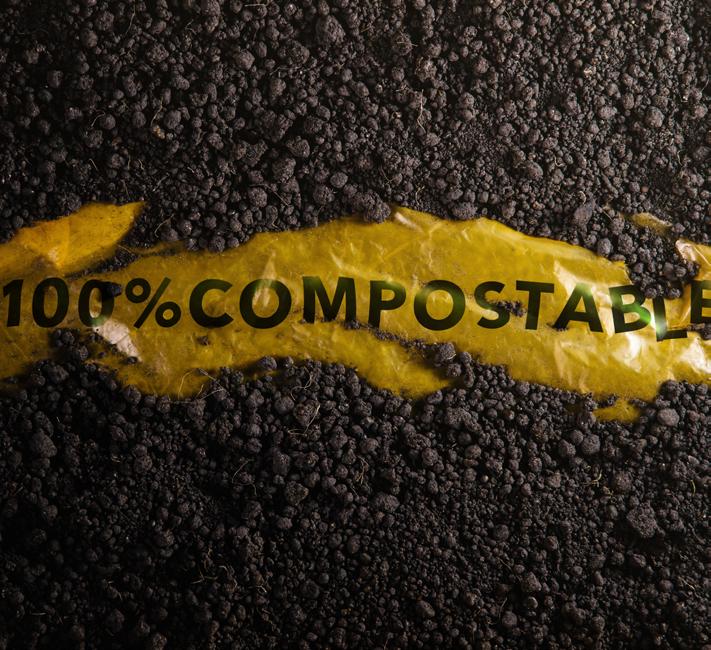

Ingredients
Responsible sourcing
Natural fiber pool - wool, cotton, lyocell, modal
Synthetic fiber pool - polyester, recycled or biobased the same with the nylon fiber pool
Conventional/virgin synthetics for enhanced durability and performance
Bio-based performance finishes for DWR
Electrostatic spinning technology for membranes
Fluorine-free processes
Recycled nylon 6.6. for sensual touch, stretch and longevity
Textile-to-textile recycled yarns - from natural and synthetic feedstock
Recycled textile to textile - repurposing too - e.g fabric to insulation
Carbon capture yarns - capturing CO2 for energy to create yarns
Materials
Focus on spinning to create yarns that can stretch and recover for comfort stretch
Base fabrics in synthetic, natural mono directions with mechanical stretch
Natural knit fabrics - blended from the same gene pool
Recycled fabric scraps from the cutting room floor
- incorporate as repair patches too
Vegan leather for shoe uppers, soft equipment and reinforcement styling in garments
Recycled rubber for footwear
Abrasion resistant tear proof
Warp knit panels for reduced components in a product
Recycled EVA for footwear and soft equipment
Classic sports middle layers
Micro fleece with the focus on a reduction in microfiber pollution - biodegradable polyester to combat microfiber pollution
Reducing microfiber pollution though construction and performance finishes
Sweaters and flat knitwear
Classic rip stop in bright synthetics through to tough-looking classics
Perfect compositions and fiber origins for all sectors of the textile sector
Classic 100 percent fabrics in both synthetic and natural form
Clear communication on how to return a product to the circular economy
Target Markets
Urban Outdoors
Camping
Hiking
Fishing
Golf
Classic outdoors for all of the family

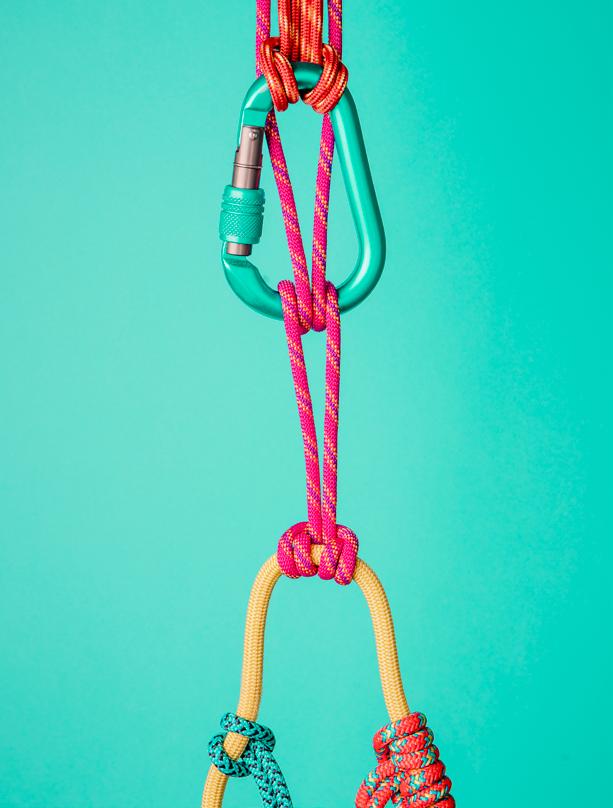
The Mood
A homage to the past inspires the direction as we take the term cool to a new level. This is about respect to the past, if ain’t broke why fix it attitude, as certainGenZ reach for the dumb phone and want to take on a geeky approach. But there is a difference; as much as the direction signals ‘dope,’ it is a ‘dupe’. It mimics the appearance of traditional knits and is woven from tweeds to Argyles, retro matte synthetics, and waxy outdoor wear. Instead, underneath this homily of past crafts is a sleek matrix of functionality and performance.
The much-loved nostalgic aspects with a pre-loved look are high-level performance with incredibly strong eco credentials. The outdoors is the focus but easily crosses into urban, as a slew of sherpa and fleece and corduroy and textured surfaces emerges, reassuring to touch, offering a complete contrast to the precision and flatness of traditional outershells.
There has to be warmth, but also lightweight and multi-functionality. Classic fabrics have the appearance but are now far more long-lasting, abrasion-resistant, and environmentally friendly. This is a mixed bag of fibers and finishes, but all petting to responsible manufacturing, including renewable energy at the factory level
Imagine Featherweight force reassurance
Dupe
Replicate Authenticity
This mood exudes reassurance, warmth, fun, and life but also respect. It is about the outdoors. It has a great angle for this trend; it's tough, it mixes and matches, and it's a classic natural team with sturdy synthetics. It's a blast from the past, but it has added plenty of invisible modernity.



Ingredients
Bio degradable polyester - chemical additives
speed up the process
Wool and cotton in multi blends with synthetics
Micro-encapsulated minerals
Reduced microfiber pollution
Recycled insulation
Responsible chemistry
PFC-free and PFA-free finishes
Low temperature dyeing processes
Dope-dyed water saving processes
Dyed yarns for constructing patterns
Water-less printing
Digital printing
Bio-based and biodegradable synthetics
Ocean waste recycled synthetics - near and far
Natural fibers - responsibly sourced and traceable
- wool, cotton
Vegan leather and real leather
Recycled and traceable down
Hemp
Materials
High tenacity wovens - plain weaves
Four-way stretch wovens with spandex/elastane
Hybrid blends - flannel, yarn dyed shirting, tweeds, birdseye structures
Knit and woven fabrics constructed to reduce microfilament shedding
Micro lightweight packable performance outershells
Matte touch rip stops
Milky touch lamination
Moleskin wovens - shirting and bottom weights
Contrasting double sided fabrics - leads to versatile design in reversible details
2.5L and 3L high performance protection in outershells - not just for the great outdoors but easily flipped over to the regularity of urban deluge
Performance denim - lightweight - high tenacity
Classic denim for its biodegradability but watch dye stuffs and finishing that could interfere with the speed of degradation
Natural/synthetic blends from recycled or bio sources in blends
Fleece structures
Sherpa fleece - exaggerated surface effect
Yarn dyed shirting
Wool blends - base layers - blend with bio synthetics for durability
Embroidered logos and trims - long lasting
Recycled metal buttons and stoppers
Target Markets
Snow-sports
Classic outdoors for all of the family
Urban and active living - enhanced versatility
Travel-wear - performance for all occasions
Urban exploration and sports
Backpacks and accessories


The sports and outdoors sector has always been quick off the mark when adaptation is the narrative, no more so than with the complexity of forever chemicals and polyfluorocarbon compounds (PFCs), once essential for performance and protection, but now replaced with cleaner alternatives. The work in this area continues, but it isn’t just about creating cleaner alternatives, it is about creating green ones, as bio-based chemicals emerge as the new finishes and auxiliaries in the textile chain.
Next-level performance ingredients look to nature’s larder for a renewable source of substances that will protect and enhance performance. This isn’t just for chemical compounds used in dyeing, fixing, and finishing but also for well-being performance.
Minerals have led the way in this area, with nanoparticles micro-encapsulated or used as a topical finish to achieve a sense of well-being, including FIR. Bionic silver ions, too, create a modern anti-odor finish. The importance of the micro-encapsulated within synthetic yarns is that the performance denoted is permanent, thus enhancing the lifespan of the garment.
Aiming for zero waste, ingredients that bring added value include mint, chitosan from shellfish, oranges, lemons, and mushrooms, all featured in auxiliaries and the final fabrics or vegan leather. This is an environmentally, ethically, and socially responsible direction for engaging in a renewable future.
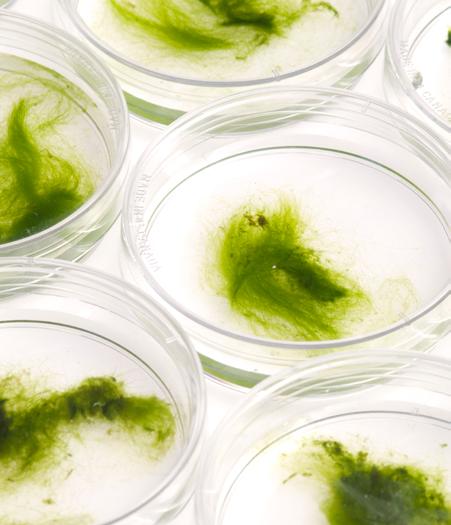


Ingredients
Bio-based propylene - sugar cane
Responsible chemistry from clean to green
Innovative ingredients, from nature from coffee beans, to food waste, algae for auxiliaries
Vegan leather from natural waste
Green auxiliaries
Fossil-free ingredients
Chemical-free finishing and care
Bio-based membranes and coatings
Recycled ocean plastics
Recycled nylon derived from used tires
Protective shell-like bio-based membranes - some rigidity
Micro-encapsulated minerals and renewable ingredients for thermal regulation
Bio-based spandex - high power
Bio alternatives - mushrooms, pineapple, orange, seaweed
Aloe vera fiber - nano molecular
Wellbeing antioxidant ingredients - apple, grape, cherry
Citric acid antimicrobial
Chitosan from grounded shells of shellfish including oysters for anti odor
Ultralight high performance insulation treated with bio-water repellency
Micro encapsulated performance - moisture management, FIR, cool touch
Topical performance finishes
Ultra fine denier yarns
Materials
Micro encapsulation body mapping 3D printing - AI customized fit
Reflective print and yarns - safety durability
Gleaming PFC-free membrane technology - twoway protection
Play with color and light - two tone effects
High power compression base layers
Body-mapped warp knits
High power compression base layers
Body-mapped warp knits
Seamless manufacturing - zero waste
Phase change materials (PCM) absorb and release heat in large quantities for the perfect personal ambient temperature
Super fine gauge knits with thermoregulating and heating technology
Transparent membranes that refracting the surface of the fabric
Temperature regulating fabrics in knits and wovens
Thermal prints - 2.5 layer fabric
Castor oil bio-based synthetics, corn
Bio-based membranes
Carbon captured yarns
Recycled Polyamide 66 - Polyamide 56 bio
Ambient prints - energy and water saving
Transfer prints using organic ingredients
Trims using bio-plastic alternatives
Polyurethane
All sports and outdoors sector
Running and road cycling
Studio fitness and active living
Active intimate apparel
Base through to outer-layer for next-gen skiwear
Adaptive winter base layers
Outdoors/urban outer layers
Soft equipment - backpacks and sleeping bags
Dates for the contest:
July 1 st , 2024 Start of application phase
September. 30, 2024 Final application deadline
October, 2024 Jury meeting
December, 3-5 2024 ISPO Munich
For all details please visit https://www.ispo.com/en/awards/textrends
We continuously update the information on our website. If you have questions, please get in touch via stephanie.ledru@lol-marketing.com
Messe München GmbH is the organizer of ISPO Textrends. Apply now: ispotextrends.awardsplatform.com
